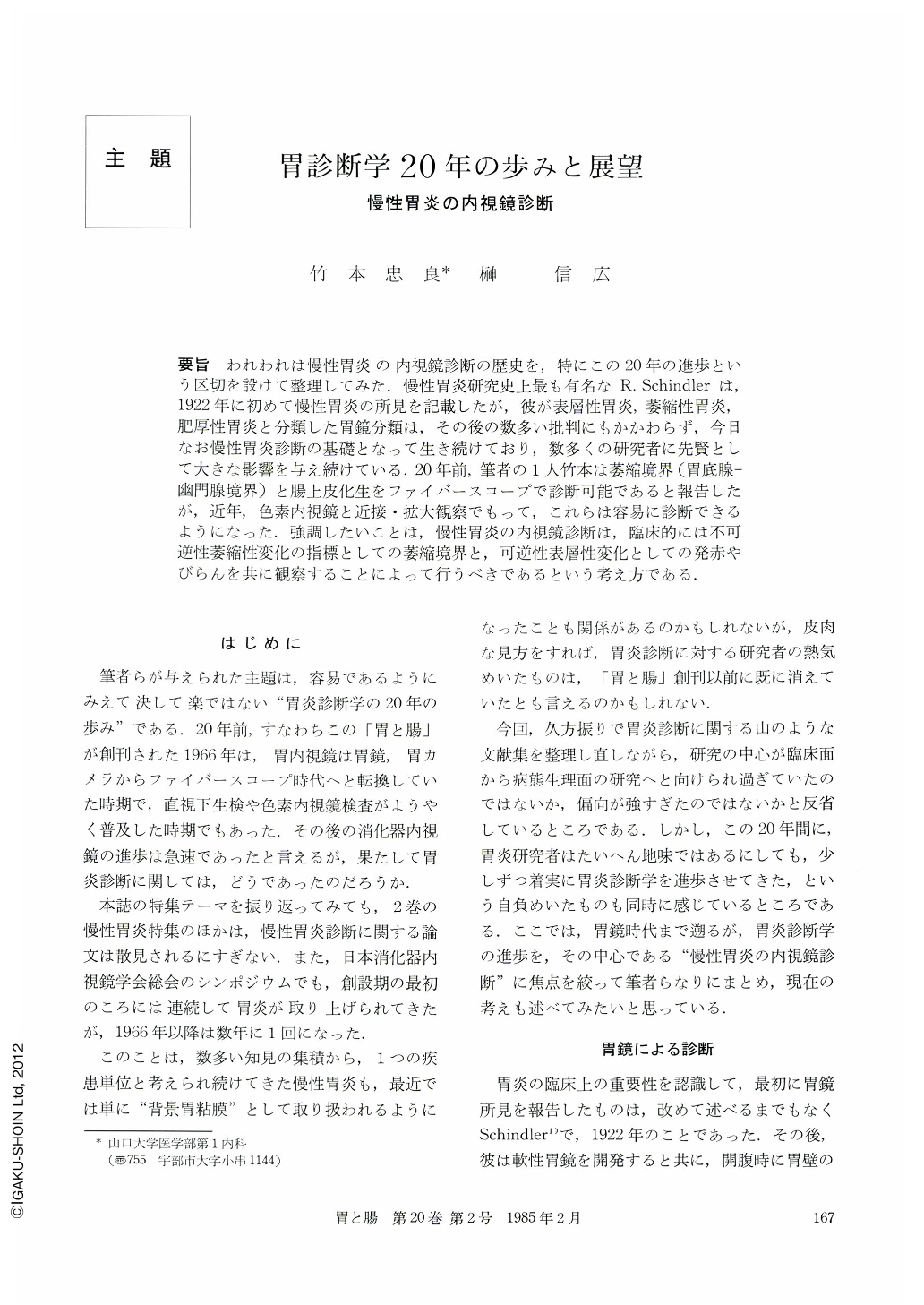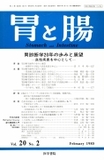Japanese
English
- 有料閲覧
- Abstract 文献概要
- 1ページ目 Look Inside
- サイト内被引用 Cited by
要旨 われわれは慢性胃炎の内視鏡診断の歴史を,特にこの20年の進歩という区切を設けて整理してみた.慢性胃炎研究史上最も有名なR. Schindlerは,1922年に初めて慢性胃炎の所見を記載したが,彼が表層性胃炎,萎縮性胃炎,肥厚性胃炎と分類した胃鏡分類は,その後の数多い批判にもかかわらず,今日なお慢性胃炎診断の基礎となって生き続けており,数多くの研究者に先賢として大きな影響を与え続けている.20年前,筆者の1人竹本は萎縮境界(胃底腺-幽門腺境界)と腸上皮化生をファイバースコープで診断可能であると報告したが,近年,色素内視鏡と近接・拡大観察でもって,これらは容易に診断できるようになった.強調したいことは,慢性胃炎の内視鏡診断は,臨床的には不可逆性萎縮性変化の指標としての萎縮境界と,可逆性表層性変化としての発赤やびらんを共に観察することによって行うべきであるという考え方である.
The history of endoscopic diagnosis of chronic gastritis, especially advances in recent 20 years, is described in this paper.
Schindler firstly reported the endoscopic findings of chronic gastritis using rigid gastroscope in 1922. In spite of many criticisms, his classification of chronic gastritis (superficial, atrophic, hypertrophic gastrios) has occupied the base of the diagnosis of chronic gastritis and influenced to the later numerous investigators until today.
Twenty years ago, atrophic border (fundic-pyloric border) and intestinal metaplasia were diagnosed by authors using fibergastroscope. In recent years, these findings have been easily demonstrated by application of chromoscopy (endoscopic congo red test, methylene blue staining method, indigocarmine contrast method) and close-up and magnified observation.
Clinical diagnosis of chronic gastritis should be made by the diagnosis of the location of atrophic border, which is the mark of irreversible atrophic change, and observation of redness and erosion as the reversible superficial change.

Copyright © 1985, Igaku-Shoin Ltd. All rights reserved.


